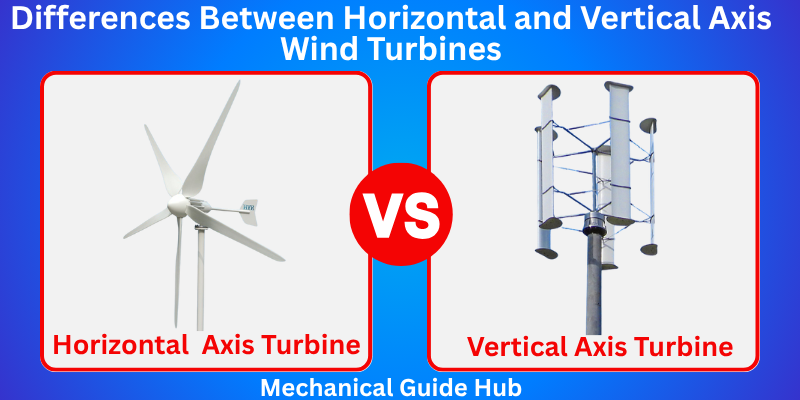Differences Between Horizontal and Vertical Axis Wind Turbines
Published: 20 Jul 2025

As the world shifts towards greener energy solutions, wind turbines are becoming more common in both industrial and residential settings. But not all turbines look or function the same.
Wind turbines generally come in two primary forms: Horizontal Axis Wind Turbines (HAWTs) and Vertical Axis Wind Turbines (VAWTs). These turbines differ in shape, performance, placement, and suitability depending on wind patterns and installation goals.
In this guide, we’ll explore the differences between horizontal and vertical axis wind turbines to help you choose the right one for your location or project.
Horizontal Axis Turbines
- They rotate around a horizontal shaft that runs parallel to the ground.
- They must turn toward the wind to work at their best. To do this, they use a yaw mechanism—motors and sensors—to adjust direction.
- They are generally more efficient, converting up to 40–50% of wind energy into electricity.
- They usually produce more electricity because they are taller and can access stronger winds.
- They are tall and wide, often found in open spaces like farms or at sea.
- They are more complex to install and maintain, often needing cranes, larger spaces, and special equipment.
- They can be noisy and sometimes harmful to birds.
- They need strong winds to start spinning.
- They are more expensive up front, but they produce more energy over time.
- They typically last longer and are built to withstand extremely strong winds.
- They usually have two or three long blades, which spin fast to create more energy.
Vertical Axis Turbines
- VAWTs rotate around a vertical shaft that stands upright like a spinning pole.
- VAWTs don’t need to face the wind. They handle wind from every direction, so they’re great for spots with shifting or irregular wind.
- They are usually less efficient than horizontal ones, converting about 30–35% of wind energy into electricity.
- They produce less power, but they are better in areas with low or changing wind.
- Because of their small size, they’re great for places with limited space, like city rooftops.
- They are easier and cheaper to install, too. Most of their maintenance can be done from the ground, which saves time and money.
- They’re also much quieter and safer for both people and animals
- VAWTs can start working with gentle breezes.
- These turbines are more affordable and a good choice for home use.
- They may not last as long as other types, but newer designs are improving their strength and efficiency.
- VAWTs can have two to several curved blades, and they often spin more slowly.
Conclusion
Both horizontal-axis wind turbines (HAWTs) and vertical-axis wind turbines (VAWTs) play a vital role in harnessing wind energy. If you’re looking for high energy output in wide-open spaces, HAWTs are often the better choice. On the other hand, if you need a compact, low-maintenance, and versatile solution for an urban or residential area, VAWTs may be ideal.
By understanding the key differences between horizontal and vertical axis wind turbines, you can make a smart, eco-friendly investment that suits your needs perfectly.

- Be Respectful
- Stay Relevant
- Stay Positive
- True Feedback
- Encourage Discussion
- Avoid Spamming
- No Fake News
- Don't Copy-Paste
- No Personal Attacks

- Be Respectful
- Stay Relevant
- Stay Positive
- True Feedback
- Encourage Discussion
- Avoid Spamming
- No Fake News
- Don't Copy-Paste
- No Personal Attacks

